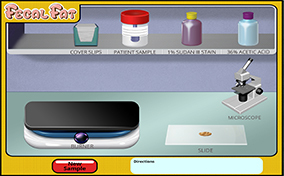What is a fecal fat test?
A fecal fat test is a common laboratory test used to measure the amount of fat in a patient’s feces. The results of the test indicate the amount of fat absorbed during digestion, which can be indicative of various conditions.
What are some fecal fats?
Common fecal fats (lipids) include phospholipids, glycolipids, glycerides, sterols, and sphingolipids.
What is steatorrhea?
Steatorrhea is the presence of excess fat in feces.
Why is fecal fat patient data important?
Steatorrhea can be associated with impaired digestion or absorption problems that ultimately result in feces with higher than normal fat content. A number of causes include a lack of lipases, loss of bile salts, exocrine pancreatic insufficiency, and diseases of the small intestines.
What conditions may be associated with elevated fecal fatty acid levels in feces?
A number of conditions have been associated with higher than normal fatty acid levels in feces. These include the presence of gallstones or gallbladder removal, pancreatitis, pancreatic cancer, cystic fibrosis, celiac disease, and Whipple disease. Certain drugs can also produce elevated fatty acid levels in feces.
What is the quantitative fecal fat microscopy method?
The quantitative fecal fat microscopy method is a way to analyze the amount of fat in a fecal sample without conducting a chemical analysis. Results from the quantitative method significantly correlate positively with those derived from chemical analyses. To complete the method, a sample is prepared and viewed with a 400x microscope. Fecal fat droplets in five fields are counted, noting the size of each droplet. Droplets are categorized into one of size classifications: 0 - 5 μm, 6 - 10 μm, 11 - 20 - μm, 21 - 40 μm, 41 - 80 μm, and > 80 μm. The number of fat droplets in each range is then multiplied by the midpoint value of each range. These products are then summed to find the fecal fat droplet total size-number product.
What are normal and abnormal size-number product values using the quantitative fecal fat microscopy method?
The following table shows the relative degree of steatorrhea based on the fecal fat droplet total size-number product.
 A fecal fat test measures the amount of fat in a patient’s feces. The amount of fat in a fecal sample is indicative of the amount of fat absorbed during digestion. A number of conditions are associated with high fecal fat levels. Your challenge is to use a quantitative fecal fat microscopy method to find the amount of fat in a sample.
A fecal fat test measures the amount of fat in a patient’s feces. The amount of fat in a fecal sample is indicative of the amount of fat absorbed during digestion. A number of conditions are associated with high fecal fat levels. Your challenge is to use a quantitative fecal fat microscopy method to find the amount of fat in a sample.)


